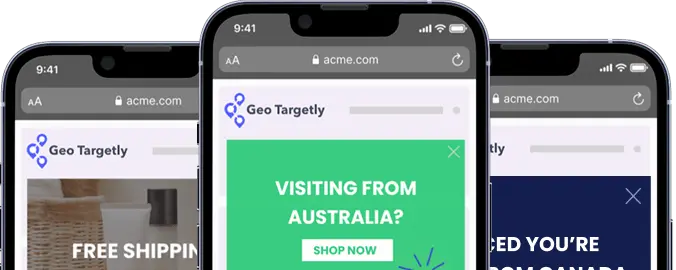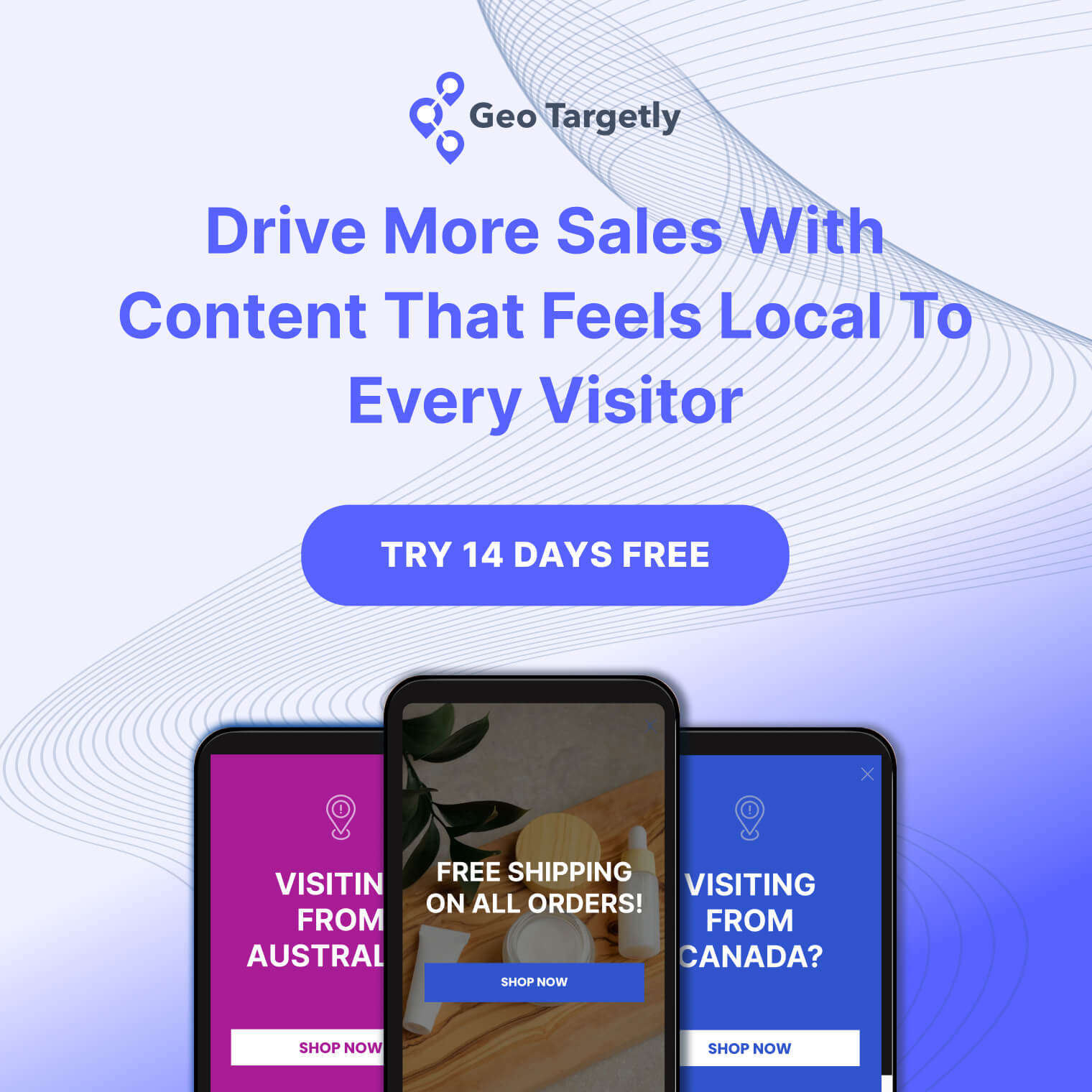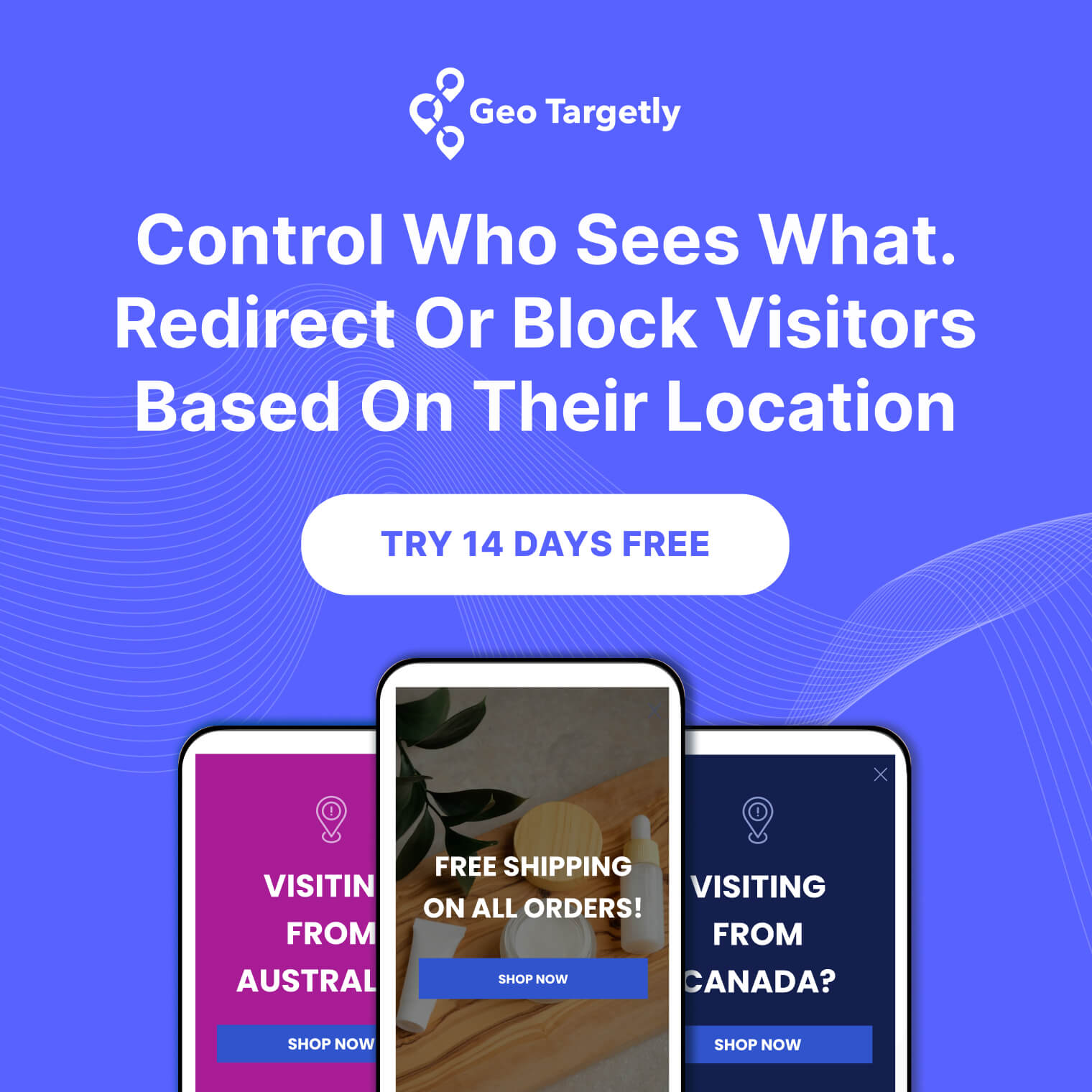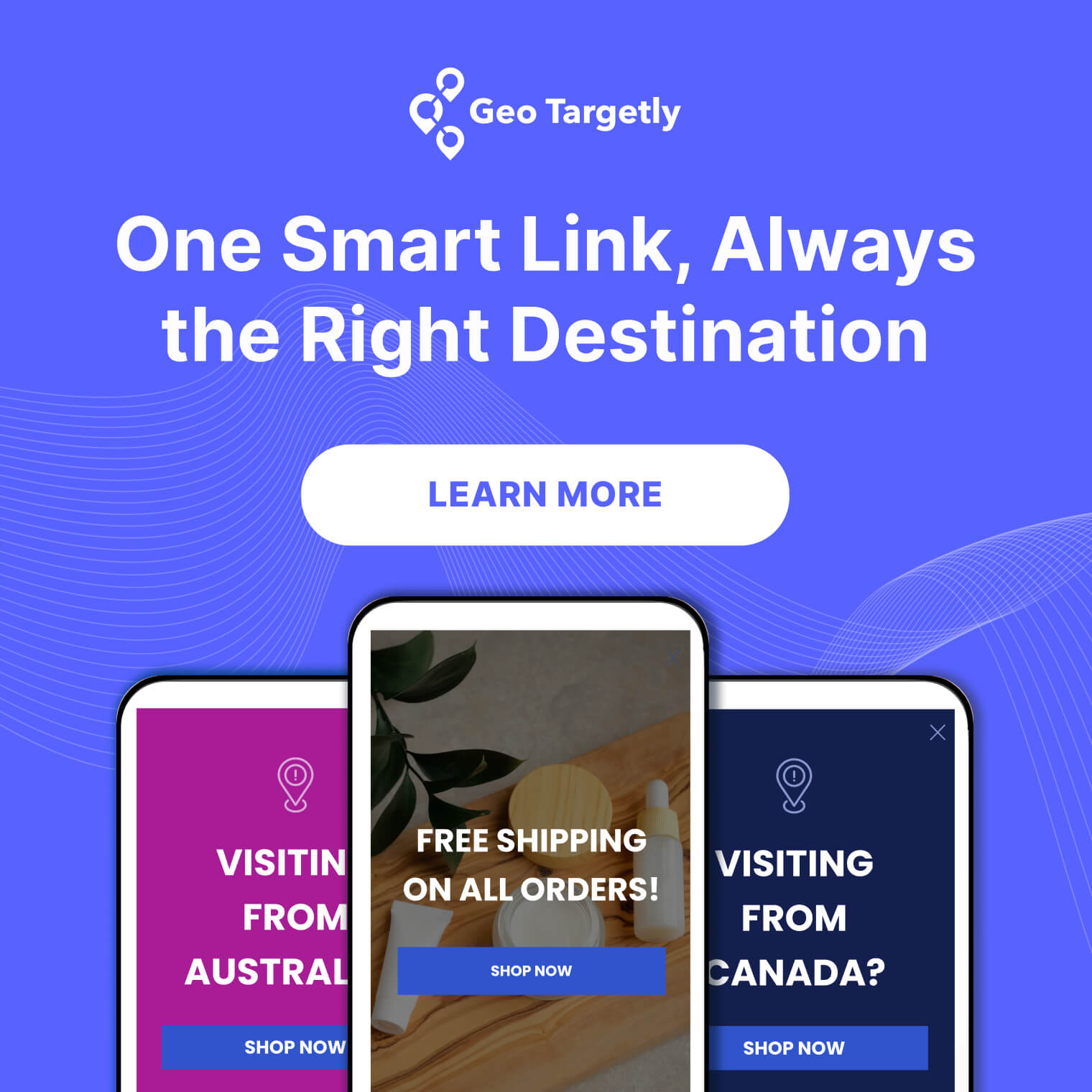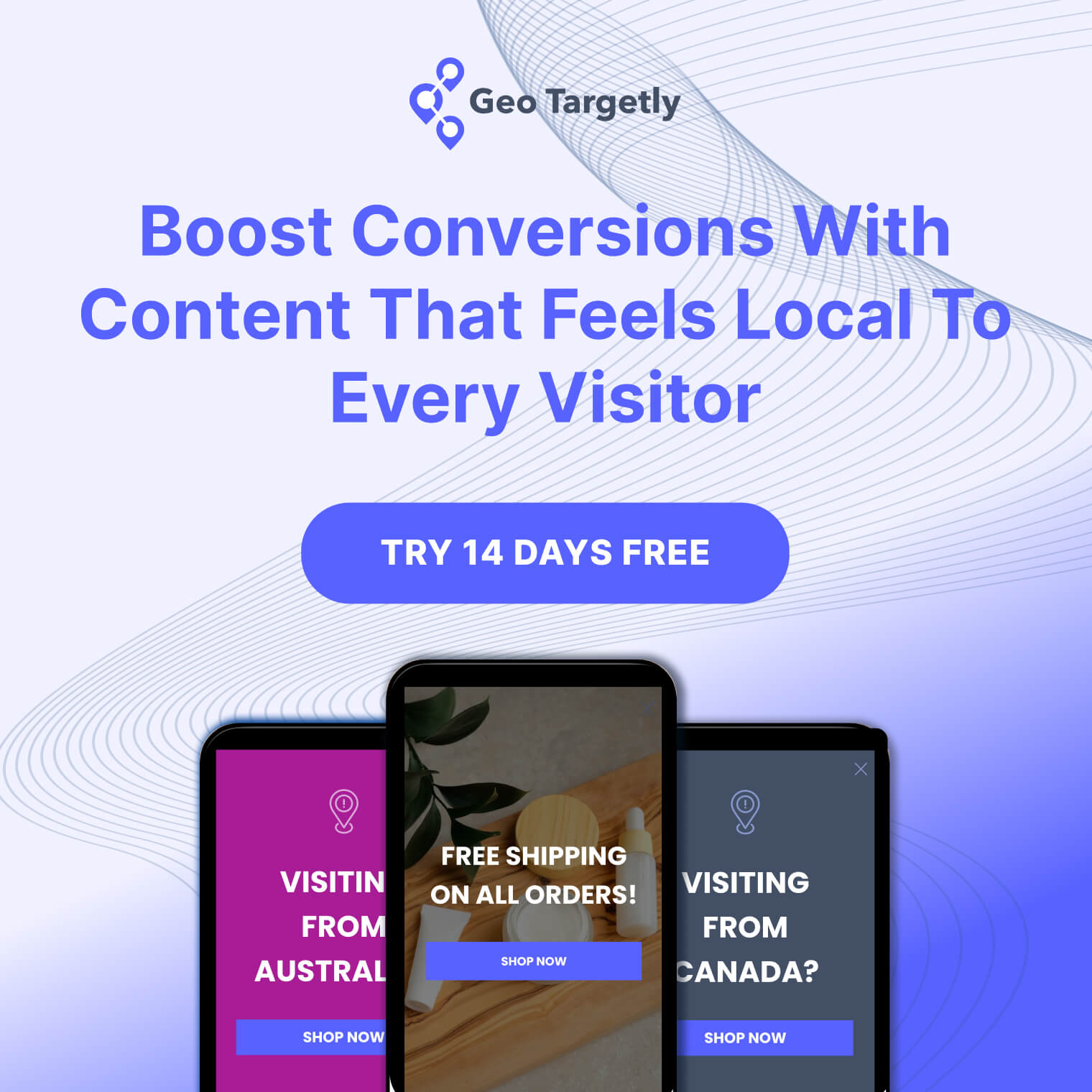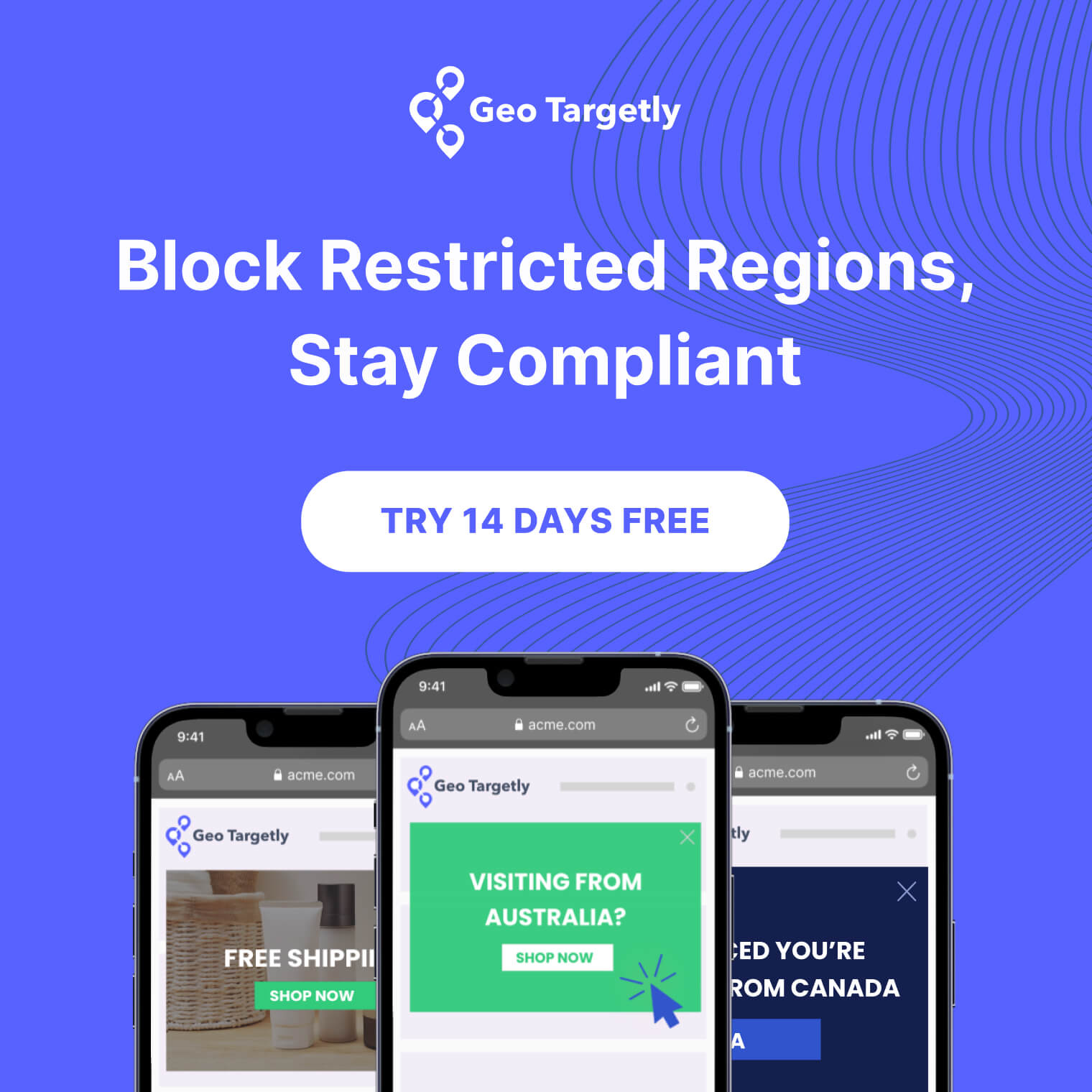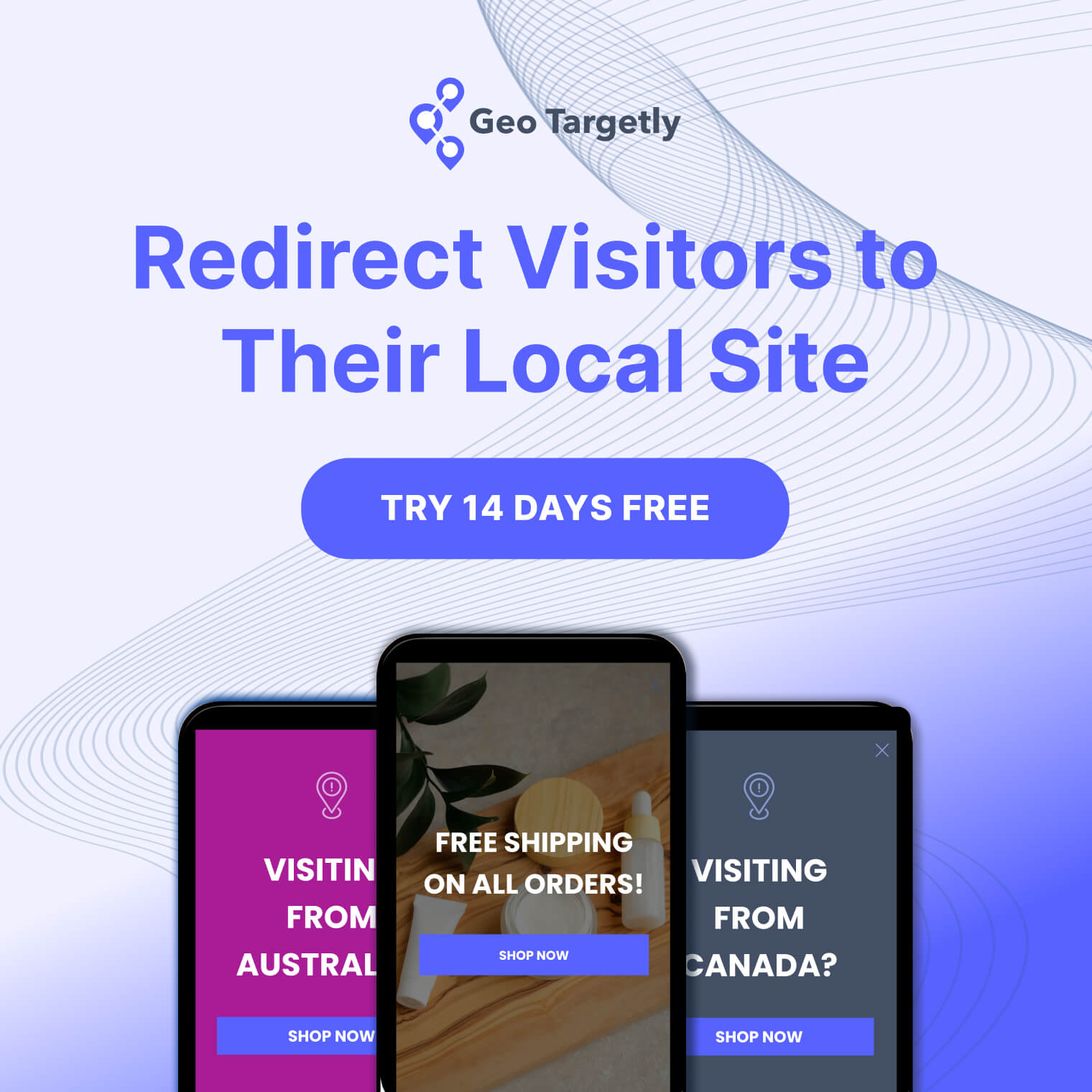

Geolocation targeting is now considered a ‘must-have’ strategy for marketers who are no longer interested in large volumes of low-quality traffic.
With tools spanning all kinds of functionality including site redirects, geoblocking, dynamic content generation, and so much more, marketers are now more specific about how they interact with website visitors from specific regions.
Given the level of personalisation these tools provide, marketers have been quick to run with them. Despite the abundance of best practices, however, geotargeting mistakes and missteps are still common practice.
In today’s post, we dive into a few mistakes that prevent you from reaping the full benefits of your geolocation targeting efforts. Continue reading for a look at everything you need to be avoiding as you introduce these tools and strategies to your website!

1. You’re not localising your store to specific audiences
If you’re running multiple retail locations across your country or state, one mistake you’re making is not having a specific page for each store.
While you don’t need to create a website for every single area you operate in, it’s crucial that you don’t simply list out your store locations in a single page on your primary site. This is because Google and other search engines want to show visitors locations and places that are relevant or close to where they’re located.
If you don’t have a page for each of your stores, it’s likely that many individuals will miss out on your offerings entirely.
For companies that don’t maintain physical store locations, site redirects are more appropriate for redirecting specific audiences to relevant regional/country websites.
2. You’ve completely neglected geofencing your Google and Facebook ads
Another geolocation targeting mistake businesses make is the failure to geofence their Google ads. Especially for supermarket chains, grocery stores and other businesses that run stores and outlets in one region, Google ads and Facebook ads are a popular way to advertise.
Yet, if you don’t geofence your ads - advertising them only within a specific region - your ads (and stores!) will start competing with each other. If you have stores in multiple state or cities and you’re running digital ads for them, make sure that you target specific geographical areas for the best possible results.
3. You’re not using the data your geolocation tools are generating
One of the biggest mistakes marketers make when it comes to geolocation targeting is neglecting the data geolocation tools generate.
Beyond just finding out where your website visitors are located, these tools also give you insights into customer behaviour that may have, otherwise, remained elusive. For instance, looking at how you’re links are performing and where clicks are coming in from will tell you which products or content appeals to audiences from different locations.
This data will prove to be a gold mine given that it will reveal what kind of strategies will work for particular customer segments.
4. You’re ignoring language barriers
If you’re creating a site meant for an international audience, ignoring language barriers can lead to poor results.
Content is king and if you’re not going to redirect visitors to content that’s catered to a certain population - one that speaks a different language - your redirect efforts will be in vain.
Fortunately, you don’t need to optimise your site or your pages for every language - just for those spoken by your audience. Without merely translating your existing content for them, try and make it unique and specific to local interests.
Bring in big wins by following best practices for geolocation targeting!
Geolocation targeting is a rewarding effort for any business with a vision for greatness. Unveiling new tools and introducing the right strategies, however, needs to be backed up by best practices in the industry - anything else is a waste.
By avoiding the cardinal mistakes we’ve set out, make sure you’re bringing the right visitors, maximising sales, and increasing conversion rates without lifting a finger!
If you want to learn more, we recommend you read our article about the biggest geographic targeting challenges.





.webp)



